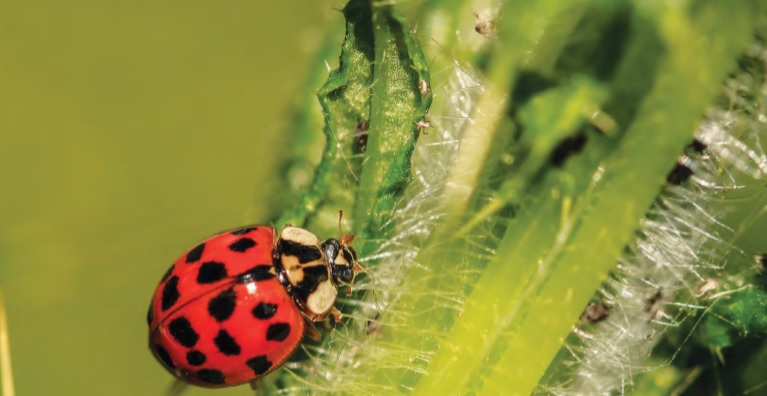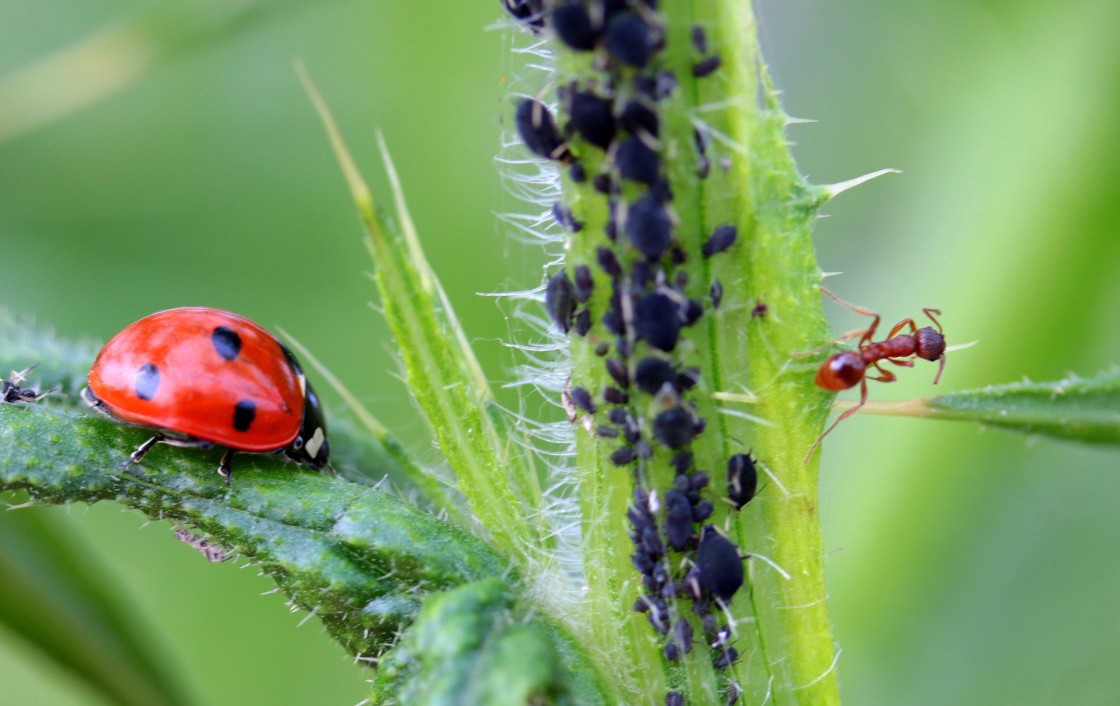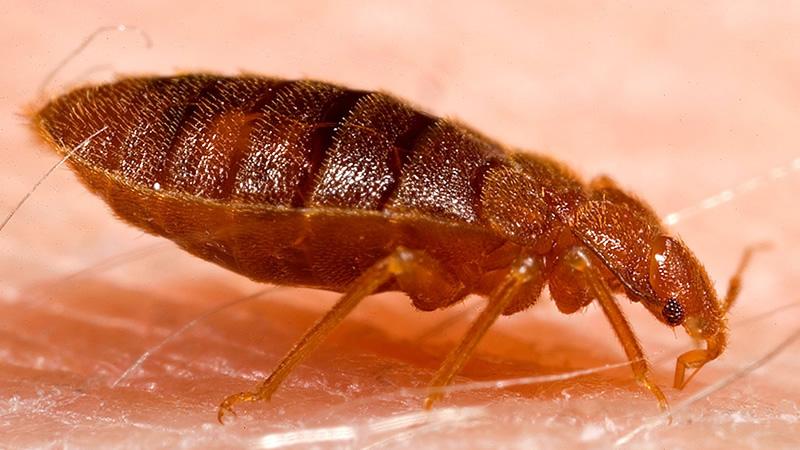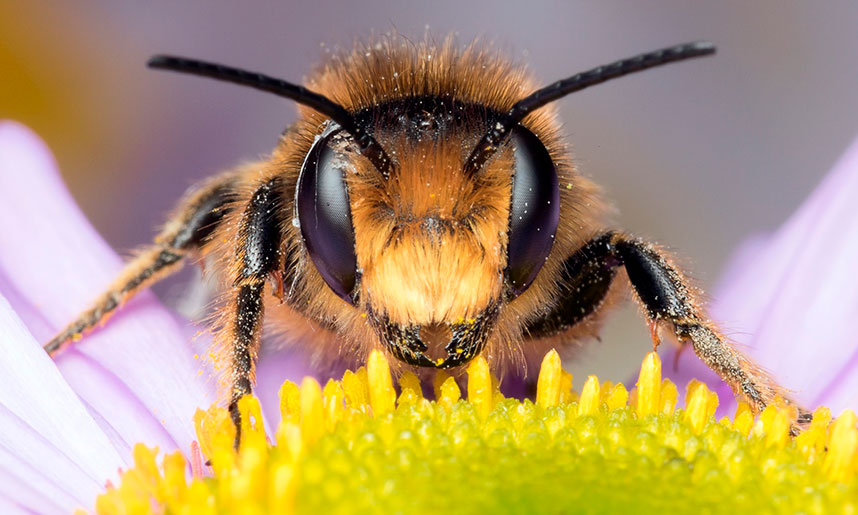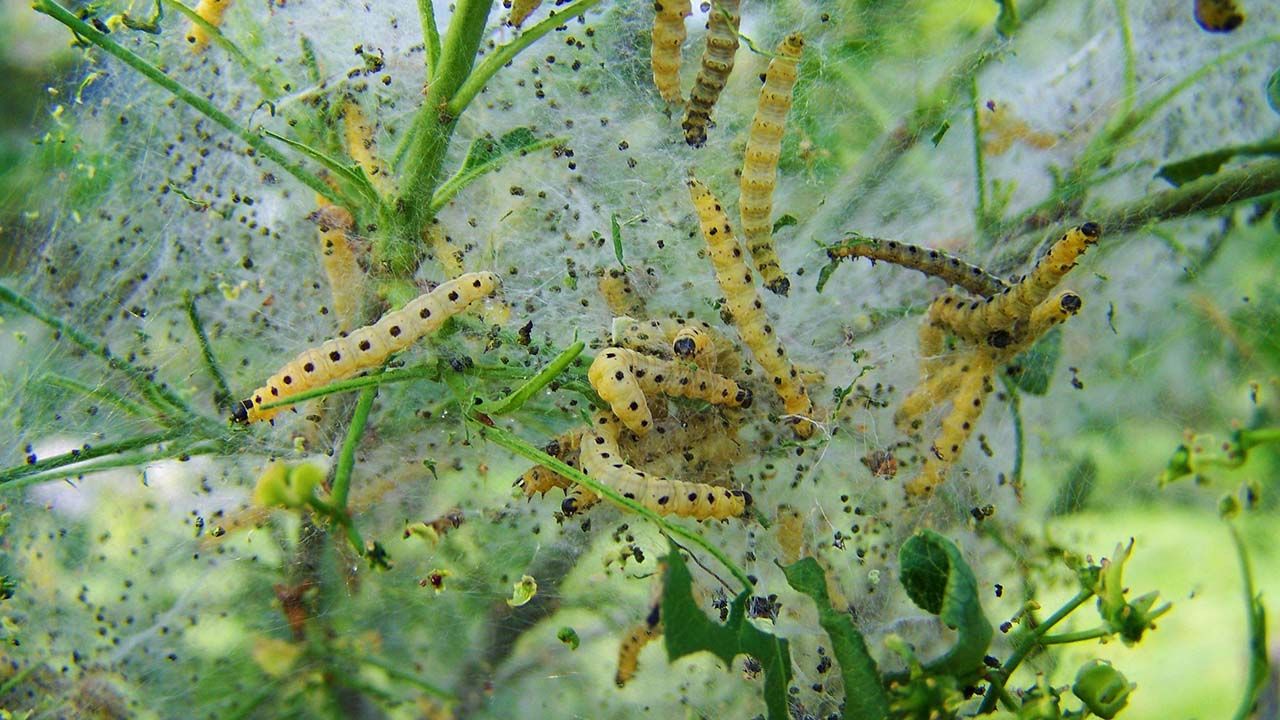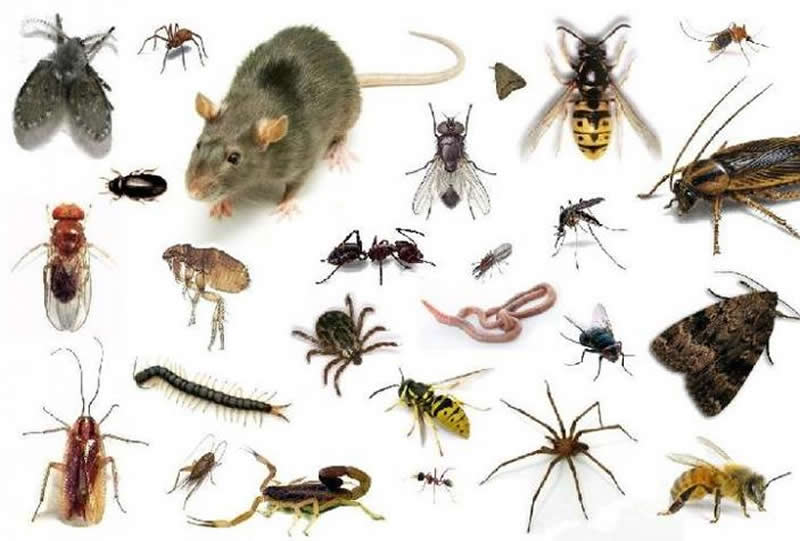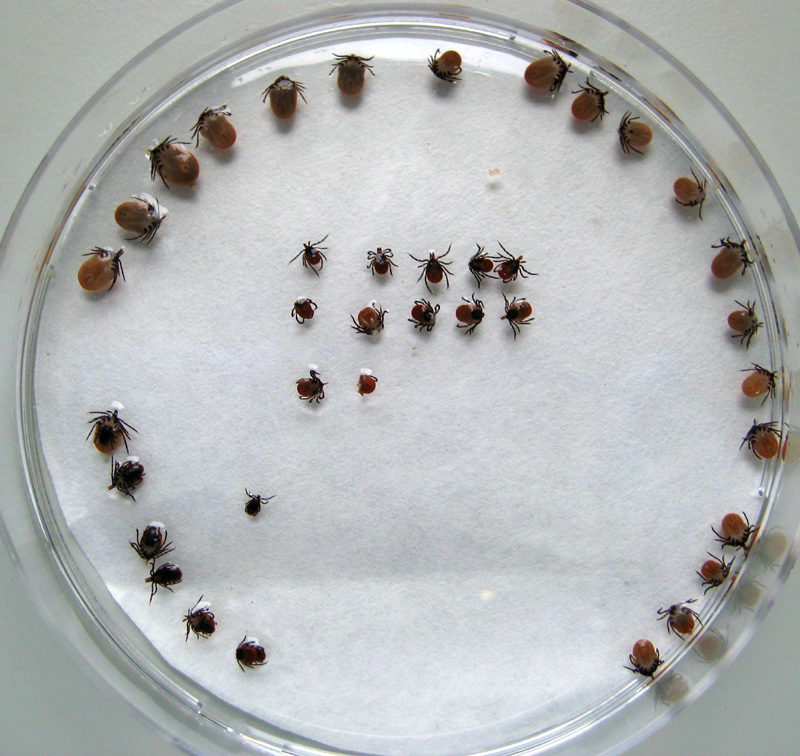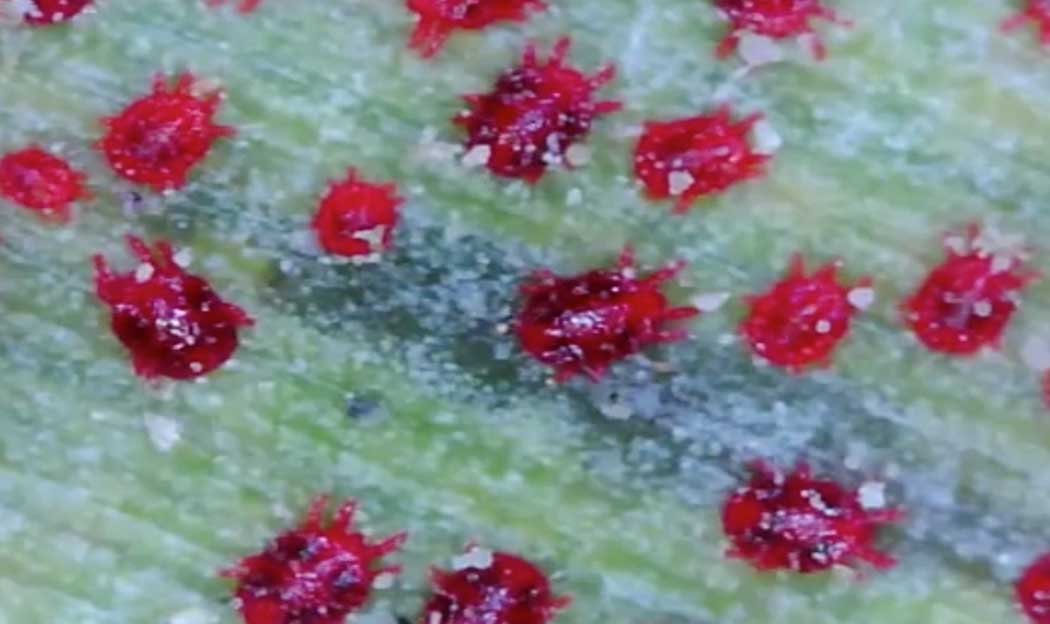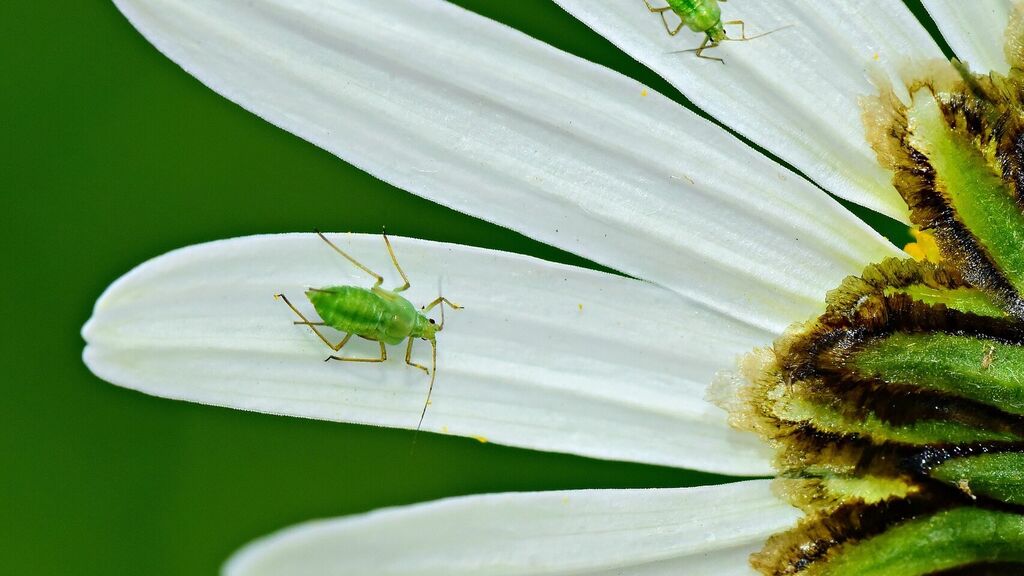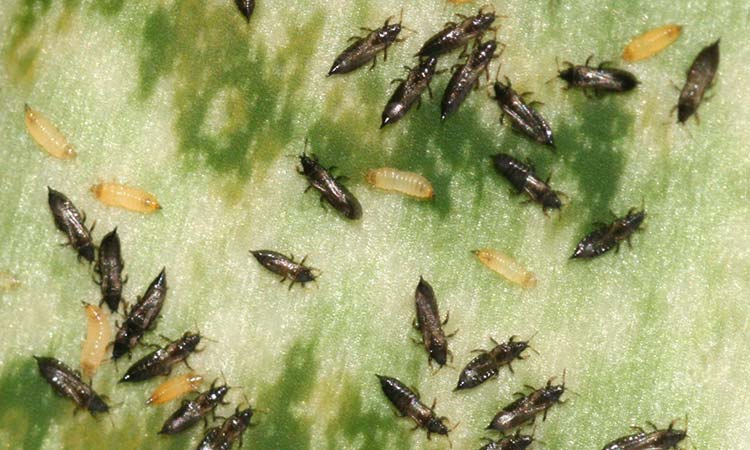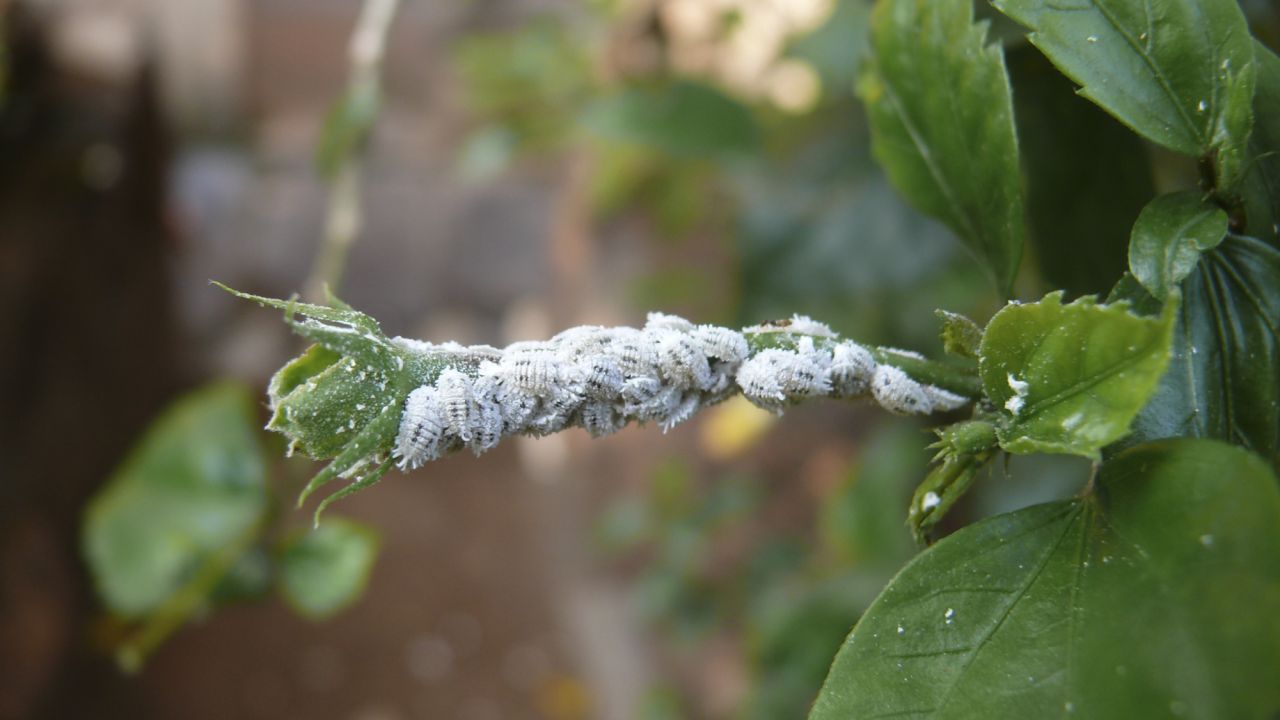Pests are an evil that human beings have had to fight for a long time. To start the fight against them you have to know what the Types of Pests are, since each one of them is attacked in a different way. Keep reading this article and you will know more about this topic.

What are pests?
As mentioned above, pests have been among human beings forever, but a long time ago the term Plague was used to refer to any type of animal that could do some damage, mainly in areas where crops are grown.
But, in the present plague is defined similarly to a disease. This is because a pest is an animal that is responsible for generating economic and physical damage and can even intervene in the interests of people.
It is compared to the term of a disease because it also produces similar damage, but with the difference that a disease can be caused by a virus and a plague is an animal that causes damage.
The current definition of what are pests it has allowed to define which ones bring benefits and which ones do not. As a result of this, the following Types of Pests have been derived:
- locust plagues.
- Forest pests.
- Medical Plagues.
- Agricultural pests. There is another pest variable known as the human plague, which refers to all the damage that human beings do to the environment.
Pests do not necessarily have to be animals, because everything that meets a specific requirement can be called a pest. factor seriesThese are:
- A species of plant or animal that is responsible for attacks against the health, economy or welfare of the human race.
- Some species that has a high population density or reproduction that is not acceptable to human beings, which brings with it economic problems.
- The species that damage the place where they live, becoming a complete threat, since it produces a reduction in the quality, availability or value of the resources found in their habitat and that are of importance to humanity.
What are the types of pests?
The above definition can be divided into different types. These types are varied depending on the place where they like to live. In turn, the types of pests are subdivided with different classifications that are given by the way they act to attack, the behaviors they have and the season in which they attack. The types of pests can be:
Agricultural Pests
When we talk about this type of pests, they are the ones that directly affect agricultural production, regardless of the part of the world in which they are found. But, the pests can depend on the type of crop, the season and the area in which they are found, since they can be affected by different species of pests.
The different varieties of agricultural pests are as follows:
- potential pests
Potential pests are those that can inhabit or exist in economic or agricultural activities, without affecting them from any point of view. This type of plague can be in small numbers of individuals and they do not multiply because the conditions that allow them to do so are not given. The conditions may not be suitable due to predators, weather, humidity, among others.
These types of pests are widely found in agricultural crops and are not a threat due to their small number of individuals, in fact many agricultural workers are not aware of their existence.
If the necessary conditions are met for the proper development of this type of pest, they can become a problem for agricultural crops and can be considered as another type of pest.
- Occasional Pests
When talking about this type of pest, the first thing to know is that they are one of those species that only turn out to be a big problem at certain times of the year. When this pest appears it is because it has the optimal climatic conditions to be able to survive, in addition they proliferate more when there is little action or migration of the natural enemies of this species of pests.
- Persistent or Key Pests
It is considered one of the types that causes the most physical and economic damage to agricultural production. As their name suggests, they are a highly persistent type of pest since they appear every year and in doing so show large numbers of individuals that do not vary much in species.
They are pests that are generated when they have conditions that are beneficial for their survival and good development. Conditions are based on the weather, the amount of protection they have, and good sources for their food.
- Migrating Pests
Unlike the previous pests, this type of pest is made up of species that are not common in the areas where they attack, but instead do so when they pass by with the aim of migrating occasionally. One of the main pests that acts in this way is the Migratory Locust.
Migratory locusts are a well-known pest for being very abundant in numbers of individuals and therefore they are capable of doing very serious damage to agricultural plantations.
- Direct plague
This type of pest is so named when it directly attacks the vital parts and organs of plants harvested by humans. These can also attack the roots of plants, leaves, stems, flowers and their fruits.
- Indirect pest
In these cases, they are pests that attack plants that are not harvested by humans. Therefore, they are not pests that damage the agricultural economy of man.
What damage do agricultural pests do?
These pests represent a great loss for agricultural productions throughout the world. According to many studies that have been carried out, the worldwide loss of agricultural jobs can be quantified, ranging from 20% to 40% of losses per year. Within the losses you can see 10% of crops that are damaged by insects and rodents.
The amount of agricultural losses can vary depending on the area where the crops are located, as well as the frequency and number of pests. People who are dedicated to agricultural production must be careful to take the appropriate protection and care measures so that these pests do not affect crops so much.
The measures that allow the crops to be taken care of and not be attacked by pests are the following:
- Have a cleaning and grooming regimen that is constant and appropriate for the type of harvest.
- It is necessary to avoid having garbage bags for a long time in the harvest area.
- Do not have uncovered containers with water or that are outdoors.
- Pay close attention to cracks or crevices found in construction.
In the case of people who have pests in the home, they can also comply with the points stated above.
Urban pests
When talking about the definition of urban pests, it is about those species that have managed to adapt to the environments that have been created by human beings, thanks to their constant development that has allowed them to do so and continue to inhabit urban areas.
These species that today are known as Urban, have existed for a long time and have managed to adapt as the population of human beings has increased. Whenever an area was colonized by humans, these pests adapted.
They are pests that have a fairly rapid development and reproduction and are able to adapt to any climate or environment.
In urban environments, these pests have the ability to get everything they need to survive; shelter, warmth, food, etc. At present, the contribution of the human being is very helpful for the plague, since in many factors what the human does helps the reproduction and development of this type of plague.
The most known pests in urban areas are mice, spiders, rats, cockroaches, mosquitoes, fleas, flies, pigeons, etc.
Household or household pests
These pests, as their name says, are those that stay in the houses of human beings. What falls into this category can be ants, flies, mosquitoes, termites, cockroaches, mites, ticks, fleas, spiders, scorpions, scorpions, among many others, depending on the area.
On many occasions, this type of plague can be harmful to the health of human beings and generate infections in houses, affect the structures that they have and even harm people psychologically and economically.
The reasons why these pests occur in people's homes can be varied and are shown below:
- Lots of accumulated dirt.
- Not doing the proper cleaning.
- Lack of disinfection in the spaces.
- Poor ventilation in the house, which brings in a lot of humidity that attracts pests.
- The windows do not have seals or have open areas such as mosquito nets or screens.
- A lot of garbage accumulation or a bag that is not properly closed.
- Leaving spoiled food inside the home, leaving it out of the fridge or not keeping it in a suitable place.
- Pets that do not take proper care, either in their hygiene or their health, can harbor pests such as mites that generate Mange in Dogs, fleas, ticks, among others.
To avoid pests, it is necessary to take into account these points that attract pests and do everything possible to avoid them. These pests can be very harmful to health. In the case of people with pets that have fleas, many methods must be applied to exterminate them, many of them can be Home Remedies for Fleas.
Pests in Animals
This type of plague is also qualified as parasites. For this type of plague to live, it requires an animal, which is why they are known as Zooparasites. They infect animals and can affect humans. The most common pests are:
- The flies.
- The mosquitos.
- worms.
- larvae
- Ticks in Dogs.
- nits.
- Mites.
- earthworms
- Leeches.
Each of the parasites or pests is defined by species or by the way in which they reproduce, act and their physiology. Some of them are external and some others are internal, attacking animals from within their body or on the surface of their skin.
exotic pests
These are those pests that develop and reproduce faster than normal and that have been introduced into the area where they are found. They are not pests born in the area where they are found because they are usually introduced naturally or as a result of human actions.
This type of pest proliferates by having a good survival condition in the area where they are introduced.
Methods to exterminate it – Insecticide
Many farmers use different insecticides or pesticides that allow them to control the pests that attack their crops. Each of the types of insecticides is ideal for attacking different pests, so you have to know what the pest is to know which insecticide to use. The different insecticides are:
- Asphyxiating or Inhalation: when this type of insecticide is used, it acts by suffocating the pest in order to control and eliminate it.
- attraction and Repulsion: the way in which this insecticide acts on the pests that you want to attack is by making them feel attracted to it, whether it is placed on the plants or in the area where the pests are. When the pests are attracted, the insecticide does the opposite so that the pest feels repulsion or disgust, causing it to leave.
- Contact: this type of insecticide has to act by contacting the individuals that make up the groups of pests. When it manages to touch the plague, it obstructs its trachea.
- Ingestion: this insecticide begins its action at the moment the pest ingests it, this causes problems in its digestive system and acts as a poison.
- Systematic: in this case, the insecticide is absorbed by the plant and when the pest uses it for food, it is poisoned.
Despite this variety of action of insecticides, they turn out to be very bad for the ecosystem. Sometimes they can become harmful to animals and even humans. For this reason, advances are being made to be able to put into practice the use of ecological insecticideswhich are less invasive.
Another alternative is also to use natural practices such as what is known as Biologic control that is done in the affected areas.
El Biological control method It is about introducing the predators of the pest in the area where they are found, so the predators are responsible for eliminating the pests in a natural way, using them for food or just scaring them away from the areas they are affecting.
This practice is widely used in agricultural crops, mainly birds of prey such as vultures and eagles, which are ideal for keeping rodents away. These are raised in areas where the pest can affect them and are kept out of crops.
Fumigations
At times when you see an infestation of pests in crops or in homes, the first thing that comes to mind is that an urgent fumigation should be carried out. But keep in mind that fumigation is not the same as pest control. When it comes to fumigation, we talk about the following:
- Fumigation
This is about those activities that help eliminate pests that may possibly affect an area, this with the help of poisons and chemical gases.
- Pest control
On the other hand, when we talk about pest control, it is about eliminating pests in an area, but starting with knowing the reason why they arrived and finding out what is the convenient way to exterminate them and knowing what is the way to prevent it from coming again.
After the above is done, a diagnosis is given and treatment begins with 3 steps: disinfection, fumigation and disinsection.
Disinfection: it is an activity that helps to destroy all the microorganisms that turn out to be harmful, this through chemical products.
Fumigation: It is the technique that is executed with a series of poisonous gases that are toxic, this in order to eliminate pests.
Disinsection: refers to the elimination and control of pests but only specialized in insects.
This way you can tell apart the processes for Fumigation and the processes for Pest Control, in many occasions the professionals do not dedicate themselves to both because they must have different knowledge and skills to carry out each one of them.
But despite being different methods, they can give very effective results and knowing which one to use depends on the pest and the area in which it has to be applied.
Home remedies for pest control
Most of the products that are used to do pest control processes or fumigations can be very bad for the environment and turn out to be toxic to animals and humans.
As an alternative to using remedies that are not harmful and that are effective, there are home remedies that work to control pests in the home. These can be:
- Remedy 1
For this remedy it is necessary to crush the garlic cloves together with some cloves, then blend them together with a little water until a mixture of homogeneous consistency is made. It should be left to rest for a few days.
-
- When the days go by, you should add a little water to the mixture and place it in a container that works to be able to spray the plants that are affected by the pests or in the corners where they stay.
- Remedy 2
The second option is executed by applying Boric Acid in the corners and cracks that can be found in the home, this helps prevent non-flying insects from developing.
- Remedy 3
Mint Plants: These types of plants help to control ticks and fleas. When you have any of these mint plants planted at the entrance of homes, it helps keep pests away.
- Remedy 4
Lemon and orange peels can be placed in the areas of furniture and cabinets, this helps to create a rich smell and, in turn, helps mainly to combat moths and other insects.
- Remedy 5
In nests where insects or pests can be found, sprays of ethyl alcohol can be used to eliminate them.
What are the most common pests?
Insects are creatures that are essential for environmental balance, so they can be found everywhere. But you have to know which are the insects that can damage plants and which are not. There is a range of pests that are the most common in orchards or home or large crops that you have, these are:
Aphids
Also known as Aphids, they are insects that are quite small, with an average of 0.3 to 3 millimeters. Up to 4.000 different species of aphids can be found, but only 250 of them can be included in the category of pests.
These can be of different colors, which can be: red, green, white or black and some of the species have wings.
With their mouth they have the ability to Suck, which allows them to obtain food from the sap of plants. Many times it can be among eggplants, tomatoes, lettuce, spinach, chili, cauliflower and some other types of vegetables.
These pests are capable of transmitting diseases, so it is necessary to always take constant care of the plants since they live on the backs of the leaves and the areas where they grow.
In order to control this pest, it is necessary to have a soap that is biodegradable and apply it to the backs of the leaves. This should be done very early in the morning and avoid the plant being in the sun in the afternoon hours.
The enemies of aphids are:
- Cysopa
- Catarina
- parasitic wasps
- parasitic flies
Larvae or caterpillars
Larvae are insects that can be commonly found in orchards and there are many types of them, which can vary in colors and sizes.
Many of the types of larvae are young insects that may eventually undergo metamorphosis, such as those from night moths and butterflies. These affect plants because they use them for food.
A larva can measure between 1 to 7 centimeters and can mostly be of the colors: white, green, brown or gray.
Their nature is chewing and they like to be on the underside of leaves, in plant growth areas or just on the ground.
They feed on the vast majority of plants that can be found in a garden, but the ones that most attract them are:
- Kale
- Cauliflower
- Broccoli
To combat the larvae it is necessary to have biodegradable soap, garlic and chili extract. This should be placed in the early morning or afternoon on the plant so that it is not affected by the sun's rays.
White fly
This type of insect occurs in the small size of 1 millimeter with white color and powdery appearance. Its diet is based on plants since it sucks their sap. It is a pest that transmits diseases and likes to inhabit the underside of the plants of:
- Pumpkin
- Eggplant
- Jamaica
- Good night flowers
- Cucumber
- Tomato
They can be combated with biodegradable soap and yellow traps.
Leaf miners
It is a small type of larva that lives in the leaves of plants, they like to make small paths in the leaves, which means that the plant does not have space to carry out its photosynthesis process. The ideal is to remove it and crush it, to prevent it from hurting the plants.
grasshoppers
It is a pest that is extremely common and has the ability to do a lot of damage to plants, since it eats the leaves of the plants and even the entire plant. They feed on any type of plant and can measure up to 8 centimeters in length.
His main enemy is the spider, the mantis and the fungi.
Red spider
It is a type of spider that only measures 0.5 millimeters and its diet is based on the sap of plants. They live in groups and spin white webs on the stems and leaves of plants to ward off predators. They mainly affect the plants of:
- Strawberries
- Tomato
- Eggplant
- Chile
- Pope
- Melon
- Pumpkin
- Pope
- Different types of trees.
In order to control red spider mites, chili or garlic extract can be used. If the plant is very affected, it is better to eliminate the plant so that the others are protected.
Trips
They are small insects that can measure from 1 to 3 millimeters. They may be yellow or brown in color. Its diet is based on plant sap and produces leaf spots on plants. They are pests that transmit diseases.
This pest is attracted to the color blue, so you can use a container of blue water and put soap or use blue sticky traps. Their predators are bugs and mites.
Cochineal
They are insects that do not exceed 6 millimeters of gray and black color. Their food is from the stems of plants. In order to protect themselves, they roll up and thus resemble a small ball. It does not affect the orchard when the soil is well nourished.
Slugs and snails
They are molluscs that like to live in humid areas and where there are ponds of water. Their diet is based on different types of plants, so they can destroy any garden. This type of pest is easy to spot because they leave trails of slime in the areas they pass through.
To prevent this pest from spreading, plants should be raised in high places and have many scented plants. They are pests that like moist and cool places. To control this pest, coffee beans, egg shells or beer traps can be used.
Nematodes
They are very small phytoparasites and like to live in the soil. It resembles an earthworm and can measure from 0.2 to 1 millimeter, depending on the species. Their diet is based on the roots of plants but sometimes they can be beneficial pests since they work as a biological control for other insects that are bad.
To control this pest, it is necessary to plant garlic cloves, since their smell repels them. One of the methods is to have a constant rotation of the crops and to make compost of the soils.
